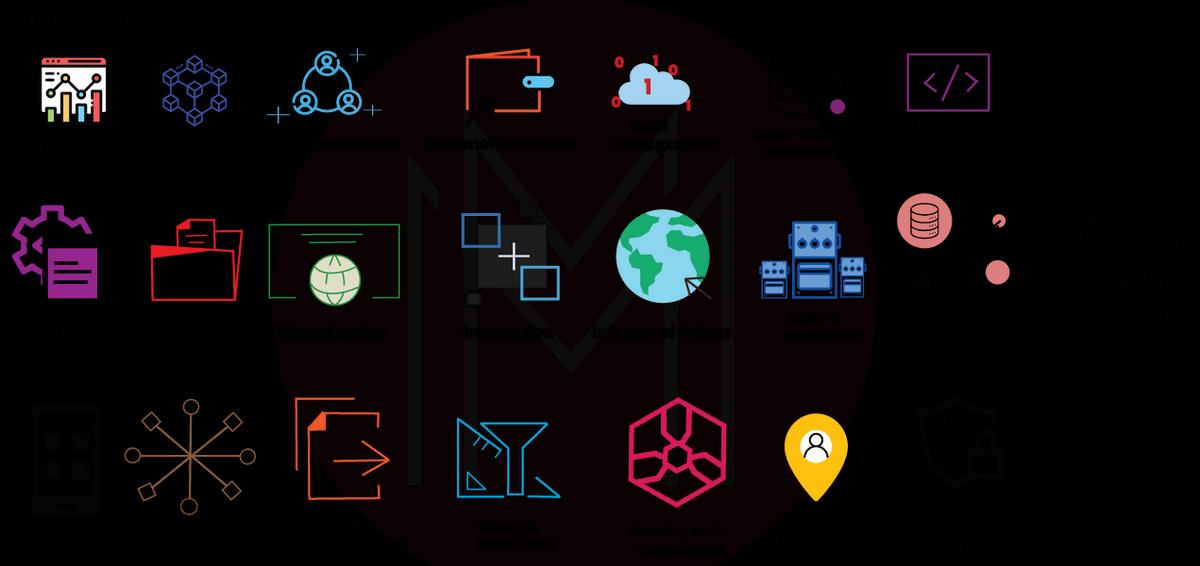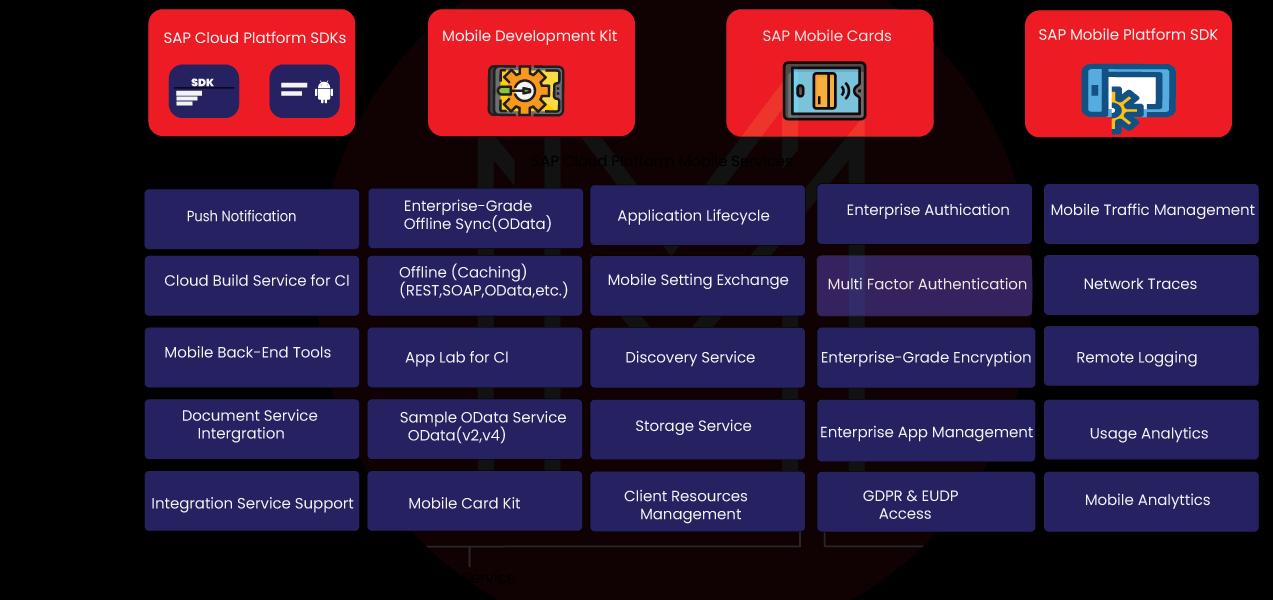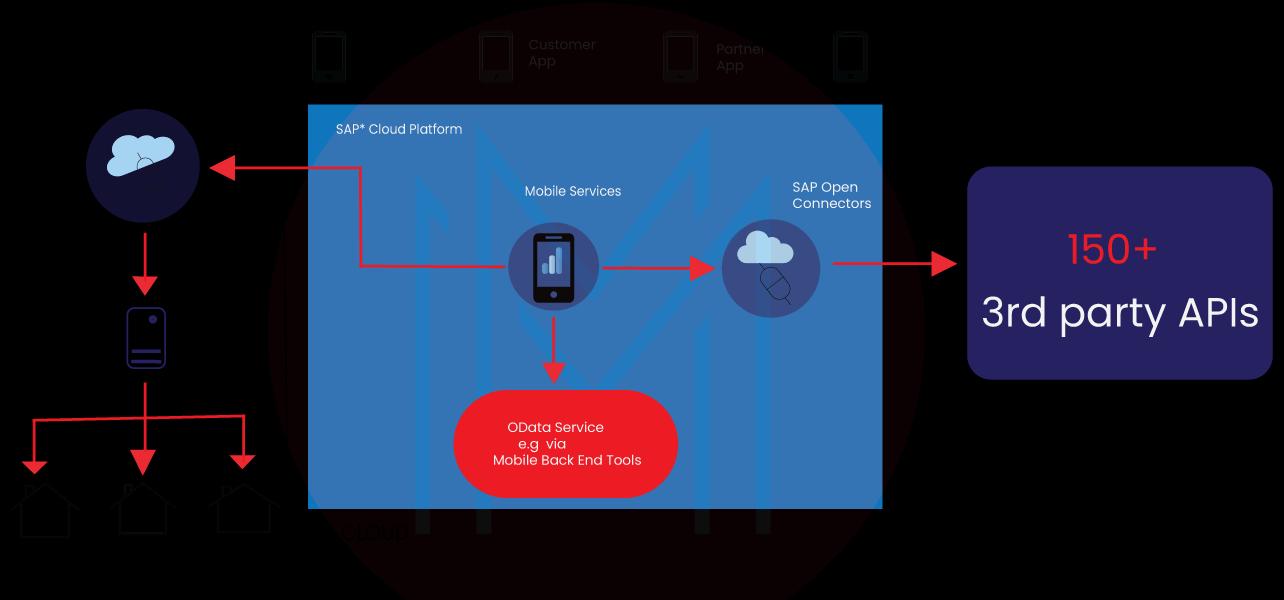- SAP Interview Questions
- SAP MDG Interview Questions
- SAP PS Interview Questions
- SAP C4C Interview Questions
- SAP ISU Interview Questions
- SAP Analytics Cloud Interview Questions
- SAP CO Interview Questions
- SAP CPI Interview Questions
- SAP VIM Interview Questions
- SAP SCM Interview Questions
- SAP IBP Interview Questions
- SAP RAR Interview Questions
- SAP TM Interview Questions
- SAP CPI Architecture
- What is SAP Transportation Management ?
- What is SAP SCM?
- What is SAP PO - SAP Process Orchestration Architecture
- SAP PO Interview Questions
- What is SAP EDI?
- What is SAP Vistex?
- What is SAP MRP - SAP MRP Tutorial
- What is SAP BTP?
- What is SAP Fieldglass?
- What is SAP C4C?
- What is SAP ISU
- What is SAP Solution Manager?
- SAP Analytics Cloud Tutorial
- SAP HCM Interview Questions
- What is SAP APO?
- SAP CPI Tutorial - A Beginner’s Guide
- What is SAP CAR?
- What is SAP PS - SAP PS Tutorial
- What is SAP IBP?
- What is SAP CPQ
- What Is Sap Netweaver
- What Is SAP BRIM
- What is SAP Master Data Governance (MDG)?
- What is SAP VIM?
- SAP MDG Architecture
- What is SAP MDG
- SAP HCM Tutorial
- SAP MDG Tutorial
- SAP TRM Interview Questions
SAP Cloud Platform is the PaaS(Platform-as-a-service) product that offers a runtime and development environment for cloud applications. SAP enables ISVs(Independent Software Vendors), developers, and startups to create and test HANA-based cloud applications. SAP Cloud Platform is based on open standards and provides developers flexibility and control over frameworks, applications, and clouds to deploy, as per SAP.
SAP is available in two commercial models: consumption-based and subscription-based. These options enable enterprises a flexible method to match the SCP services with the organizational requirements. Leading organizations like Honeywell, KPMG, Valmont Industries Inc, and Colgate-Palmolive use the SAP Cloud Platform. In this What is SAP Cloud Platform blog, you will learn how SAP Cloud Platform supports modern software development and deployment.
SAP Cloud Platform - Table of Contents
- What is the SAP Cloud Platform?
- Why is the SAP Cloud Platform Different?
- Capabilities
- Benefits
- Mobile Services
- Architecture
- Future of SAP Cloud Platform
- Cloud Foundry Environment
- SAP Cloud Platform Developer Responsibilities
- SAP Cloud Platform vs SAP HANA Enterprise Cloud
- FAQs
What is SAP Cloud Platform?
SAP Cloud Platform is the cloud service offered by SAP as per Platform-as-a-Service (PaaS) for developing and deploying custom web applications. SAP can handle the complete infrastructure of the SAP cloud platform, like hardware servers, component upgrades, system lifecycle, and maintenance costs.
It offers a wide range of services list like data backup, storage, database, transaction layer, and reporting services for developing multi-platform software development. By using the SAP Cloud Platform, we can use this cloud environment for handling the software development or can also utilize the hybrid model as per on-site and cloud environments.
The SAP Cloud Platform can be incorporated with the below for getting development and data:
- 3rd Party Applications
- Internal Solutions
- SAP Applications.
| If you want to enrich your career and become a professional in SAP Cloud Platform, then enroll in "SAP CPI Training". This course will help you to achieve excellence in this domain. |
Why is the SAP Cloud Platform Different?
SAP Cloud Platform provides PaaS-based in-built and micro services-oriented mobile-enabled cloud applications. It provides you the option for controlling your selection of frameworks, applications, and cloud. It delivers inventions that integrate with SAP applications. It also improves user interactions with automation and artificial intelligence.
SAP Cloud Platform works rapidly with code-first and no-code development tools. It utilizes and analyzes the data from the SAP applications within the proper perspective and meaning. It deploys in the mission-critical cloud environment handled by SAP. It customizes the business processes without the requirement of any maintenance.
SAP Cloud Platform Capabilities
SAP Cloud Platform offers several types of tools, services, APIs, and other application capabilities that enable you to extend and integrate our applications. The capabilities and services of the SAP Cloud Platform are utilized by various customers across the globe. SAP Cloud Platform offers SAP Analytics Cloud for offering actionable insights and analytic capabilities. It is achieved by incorporating SAP Analytics Cloud with any on-site systems.
The custom-built SAP Fiori applications in SAP S/4 HANA Cloud will access the SAP ASE and SAP HANA services. SAP Provides Services to allow application development on the SAP Cloud Platform and aggregates the services into the technical and business services type. The services provided by the SAP Cloud Platform are grouped as follows:
- Integration Suite: Cloud Integration, OData Provisioning, Open Connectors, Smart Data Integration, and API Management.
- Intelligent BPM: Workflow, Business Rules, Process Visibility, and SAP Intelligent RPA(Robotic Process Automation).
- Enterprise Extensions: SAP Web IDE, SAP Data Quality Management, ABAP environment, SAP Localisation Hub, SAP Business Application Studio, Data Enrichment for SAP S/4 HANA, and Tax Service.
- Digital Experience: SAPUI5, SAP Fiori Cloud, Document Service, Mobile Services, SAP Conversational AI, SAP Build, Portal.
- Data-Driven Insights: SAP Analytics Cloud, Internet of Things, SAP ASE Service, SAP HANA Cloud, SAP Stream Analytics, SAP Web Analytics, SAP Edge Services, SAP Data Intelligence, SAP Leonardo Internet of Things.
- Platform Foundation: Java Server, Job Scheduler, Transport Management, Data Retention Manager, Alert Notification, and Application Logging.
SAP Cloud Platform Benefits
- The SAP Cloud Platform is an inventive and enterprise-ready PaaS provisioning for enabling the intelligent enterprise.
- The SAP Cloud Platform services are either consumption or subscription-based.
- The SAP Cloud Platform excels in the market among the competitors for several reasons, like easy integration with the system landscapes or existing solutions.
- Moreover, SAP provides quick deployment of applications and services, develops native applications with low code, the best user experience, and event-driven application interfaces, assures business continuity, and reduces complexity, real-world data insights, and security.
SAP Cloud Platform Mobile Services
Developing mobile applications is a problem; there are various distinct requests and needs from users and customers towards the mobile applications and from the enterprises. There are various needs coming from security aspects. To satisfy their needs, the required skillset is missing. Another problem here is to incorporate the mobile solution into the back end for retrieving data and write back it into the back end. 
As indicated, authentication is one of the aspects of mobile application development, but also one sign-in towards several back ends that mobile solutions can be very challenging. Moreover, all these attempts we put into the mobile app development and going afterward mobile solution will generate plenty of operational costs.

In the mobile applications, we can see plenty of distinct challenges. For example, the mobile application must also execute in the offline state where don’t have the connectivity. Yet the application must offer the complete user experience to the users. Further, we have to deal with several device platforms and many devices themselves. Moreover, we must roll out a new version of the application lifecycle. In the end, we also must check whether our application is a success or not. Thus, we should assess if our application is properly being utilized or not. To overcome all these challenges, we have SAP Cloud Platform Mobile Services.
At the top, we can see different consumption models for consuming the service. We can also use the inhabitant SDKs, SAP Mobile Cards, and Mobile Development Kit. It also includes other applications for developing mobile applications. At the bottom, we can see various boxes. These boxes are structured into three groups. On the right side, we can see everything required to operate the application at the run time.
Thus, if we carried out 5000 applications to the users, we have to handle the traffic of those applications and devices. We have to handle underlying causes and troubleshoot the sessions, and all these are offered by mobile services.
In the middle, we can view the security. It includes authentication and connectivity to back-end systems, which offer data for the mobile application. So, authentication can be multi-factor authentication, but encryption is also included.
On the left-hand side, we can view various blocks which are labeled as app services. In these app services, we can discover the reusable components or the features that we can insert into our application so that we don’t have to resolve the business problems or this problem repeatedly for every application.
SAP Cloud Platform Architecture
SAP Cloud Platform allows organizations to develop, scale, and migrate enterprise applications in the cloud. The SAP Cloud Platform offers the environment to bind together the ERP technologies and applications like blockchain, big data, AI, and machine learning.

The SAP Cloud Platform contains two different development technologies and environments a company requires to ensure a successful migration will rely on which SAP cloud offering it selects, The architecture of SAP Cloud Platform mobile services is simple and easy. On top, we can view several apps that we have developed that link to mobile services.
The mobile services will relay your data communication to either SAP Systems you have on-site through the SAP Cloud Connector. We can also link to the back end that we have developed with the SAP Cloud Platform. Further, we can connect to the third-party APIs through the SAP open-source connectors.
Mobile Services exist in every data center around the world, and it is also available in both Cloud Foundry and Neo environment.
[ Check out SAP CPI Architecture ]
Future of SAP Cloud Platform
SAP Cloud Platform is already popular among many customers, not only those who utilize SAP systems yet also non-SAP customers, since it provides better scalability and flexibility for third-party cloud-based applications. With the upgrading of technology and various exciting features, the cloud provides various users globally to migrate their applications from the on-site to the cloud environment.
Through the SAP Cloud Platform, users have access to a wide variety of pre-configured services. Through these services, we can develop ready-to-use applications in a short period of time. The SAP Cloud Platform simplifies the management of the application interfaces(API) - irrespective of the legacy system or new systems. SAP has already formed the foundation with the cloud platform, and it will improve the features for all the applications.
Cloud Foundry Environment
While utilizing the Cloud Foundry Environment, services are activated by creating the service instance and binding the instance to the application. We can create the service instance as per a particular service plan specified as the configuration version of the service.
For integrating any service of the service instance with the application, we have to send service credentials to the application. Attaining this, we can tie the service instances with the application to give these credentials to our application automatically, or the other method is by utilizing the service keys for generating credentials for communicating directly with the service instance.
Responsibilities of SAP Cloud Platform Developer
A SAP Cloud Platform developer is responsible for the management and development of the application on the cloud platform. Following are the main responsibilities of the SAP Cloud Platform:
- A SAP Cloud Platform is responsible for offering a scalable, reliable, secure, and extensible infrastructure for the application deployment and development on the cloud platform.
- He has to handle tools and VMs to set up the services on the SAP Cloud Platform.
- He should be able to design new wireframes, prototypes, and interfaces for the new applications.
- SAP Cloud Platform Developers are also responsible for controlling and deploying the application development cycle.
SAP Cloud Platform vs SAP HANA Enterprise Cloud
Generally, the SAP HANA Enterprise Cloud and SAP Cloud Platform are considered as the same products, but they are not similar. There are two different cloud platform provisions from the SAP. Even though both utilize the SAP HANA platform for building, integrating, and extending the applications, they vary in the services they provide. The SAP Cloud Platform is the Platform-as-a-Service(PaaS), while the SAP HANA Enterprise Cloud is the IaaS(Infrastructure-as-a-Service) environment.
HANA Enterprise Cloud is the private hosting service for the SAP HANA platform and its associated applications. It is completely handled by SAP and offers all the technical and functional capabilities of the on-site SAP HANA in the privately handled cloud environment.
In Several ways, HANA Enterprise Cloud is beneficial over the SAP HANA on-site like the SAP managed cloud, reduction, scalability in the total cost of the ownership, a good time-to-cost ratio, and extensive technical and functional services. In contrast, the SAP Cloud Platform provides various services that are either handled by SAP or other cloud provisionings vendors like Azure, AWS, and GCP.
| Learn SAP CPI Interview Questions and Answers that help you grab high paying jobs |
Most Common SAP Cloud Platform FAQs
1. How do I start CPI in SAP?
Follow these steps to start CPI:
Step 1: Once we log in, we will find the account created in platform cockpit.
Step 2: As we click on account, we can view the Tenant Management Nodes. For the individual tenants, we can maintain the required configurations.
Step 3: To get started with the CPI, in your tenant, open “Members” and “Add Members.” Give them proper roles. Administrator and Developer roles are mandatory if the ID is to be utilized to build the IFlows.
Step 4: Next, Open “Security/Authorizations” and assign the ID with proper roles as displayed below.
If you do not implement step 4, we will get errors when we log in to CPI through the SUser ID and Password.
2. What is SAP CPI used for?
SAP CPI(Cloud Integration) is the cloud service developed by SAP to develop the latest applications or develop the existing applications in a secure computing environment.
3. What is the first step in CPI?
Classification is the first step in the CPI compilation because its sub-aggregates must be specified in such a way that the expenditure prices and weights will relate accurately to the coverage of sub-aggregates.
4. What is SAP CPI called now?
SAP CPI is now called SAP BTP(Business Technology Platform).
5. What framework is CPI based on?
SAP CPI is based on Apache Camel Integration Framework.
6. What is the CPI tool?
CPI(Cloud Platform Solution) is the solution to integrate different systems using the cloud. It is an element of the SAP Cloud Platform integration suite. CPI connects services, systems, AI, data, people, and IoT.
7. What is the difference between SAP PO and SAP CPI?
CPI shares the same standards and inherits various features from the SAP PO, except it is cloud-based and follows a pay-as-you-go manner. SAP CPI and SAP PO have distinct advantages: the proper choice differs as per the organization’s systems, budget, and priorities.
8. What is IDoc in SAP CPI?
IDoc is the standard container used to exchange data between applications. Between SAP applications, they are transferred through the ALE layer, which utilizes either File technology or tRFC as the inherent technique.
9. What are the prerequisites to learn SAP CPI?
Anyone who wants to learn SAP should have an understanding of any programming language, Groovy Scripting, and Integration tools.
10. What are the types of processes in SAP CPI?
Following are the different types of processes in SAP CPI:
- Sourcing and Contracts
- Supplier Management
- Invoices and Payments
- Travel and Expenses
- External Workforce and Services Procurement.
Conclusion
SAP Cloud Platform is developed to enable enterprises to extend the existing on-site or cloud-based ERP applications with new and advanced technologies like advanced analytics, machine learning, or blockchain; develop and deploy the latest enterprise business mobile and cloud applications. I hope this What is SAP Cloud Platform blog gives you enough information about SAP Cloud Platform. If you have any queries, let us know by commenting below.
 On-Job Support Service
On-Job Support Service
Online Work Support for your on-job roles.

Our work-support plans provide precise options as per your project tasks. Whether you are a newbie or an experienced professional seeking assistance in completing project tasks, we are here with the following plans to meet your custom needs:
- Pay Per Hour
- Pay Per Week
- Monthly
| Name | Dates | |
|---|---|---|
| SAP CPI Training | Jan 03 to Jan 18 | View Details |
| SAP CPI Training | Jan 06 to Jan 21 | View Details |
| SAP CPI Training | Jan 10 to Jan 25 | View Details |
| SAP CPI Training | Jan 13 to Jan 28 | View Details |

Viswanath is a passionate content writer of Mindmajix. He has expertise in Trending Domains like Data Science, Artificial Intelligence, Machine Learning, Blockchain, etc. His articles help the learners to get insights about the Domain. You can reach him on Linkedin
















